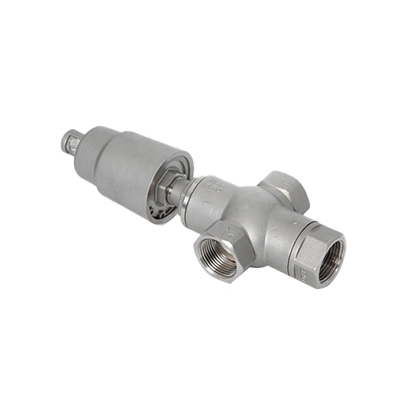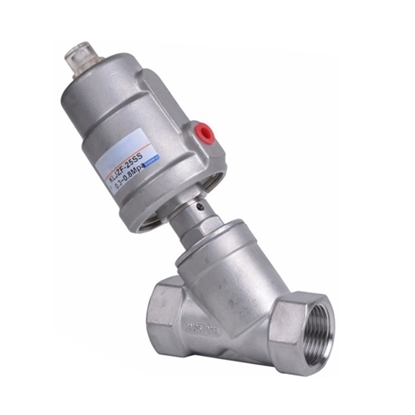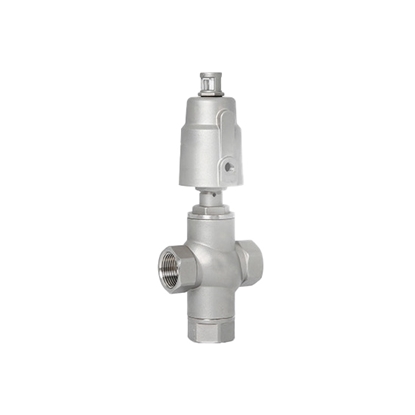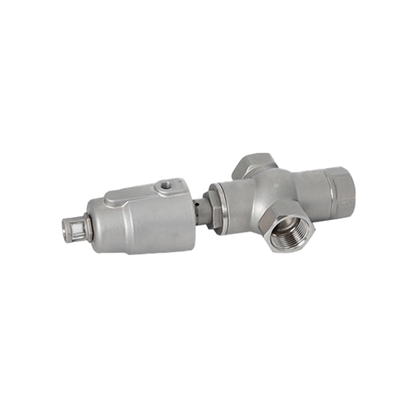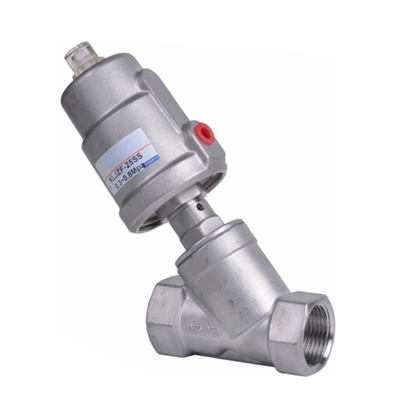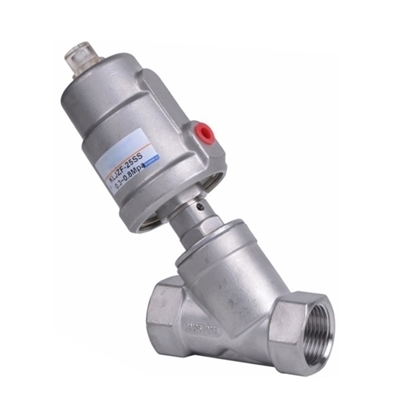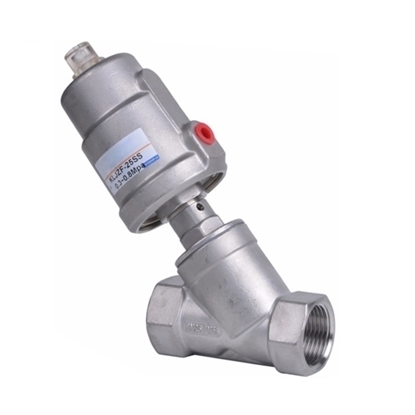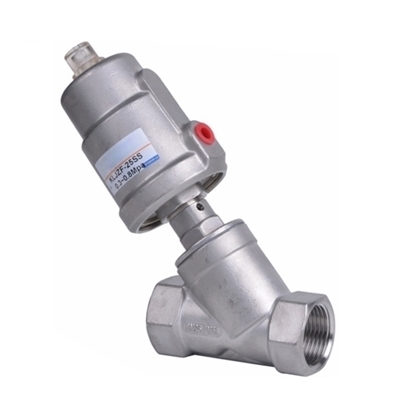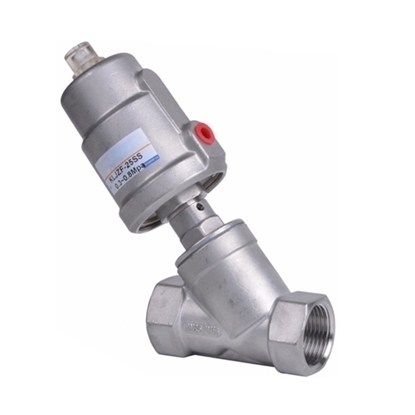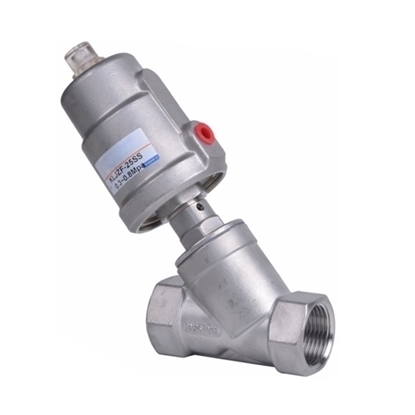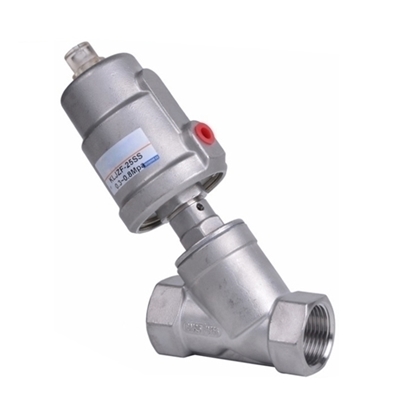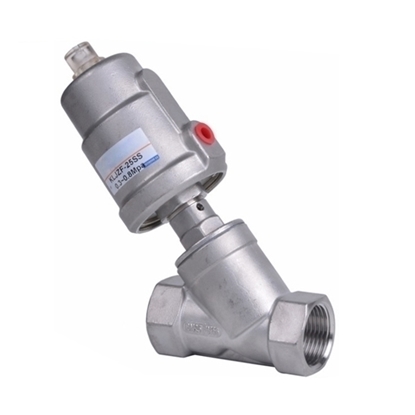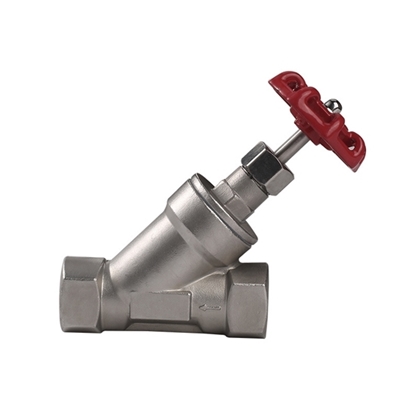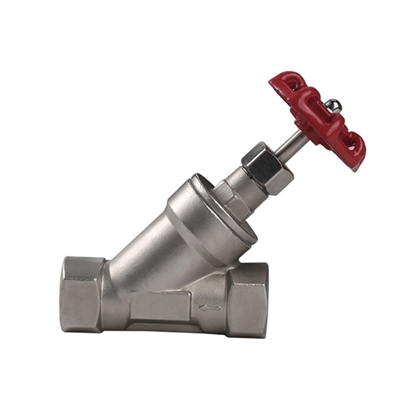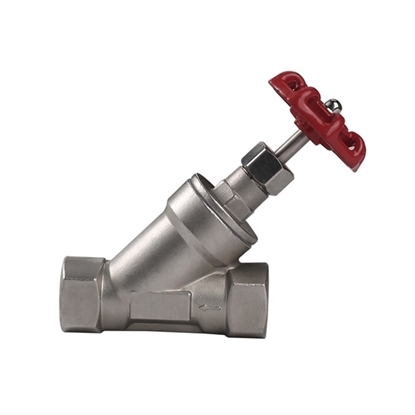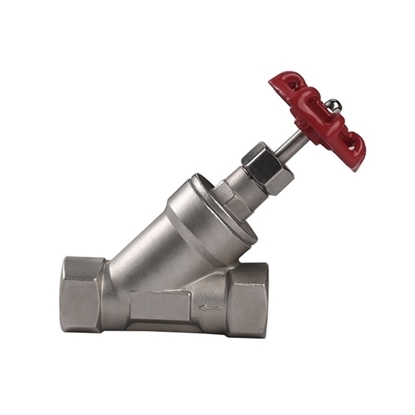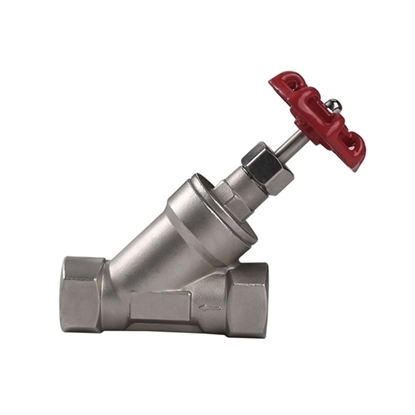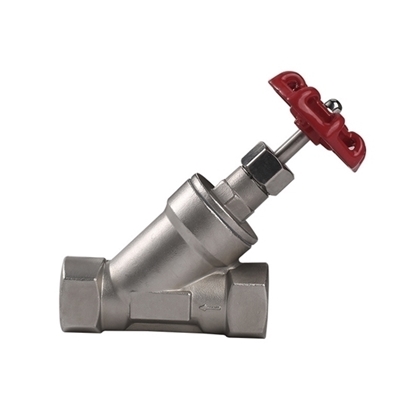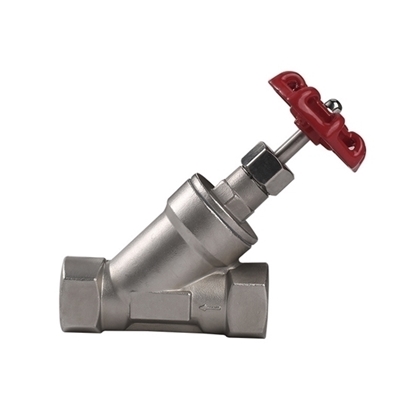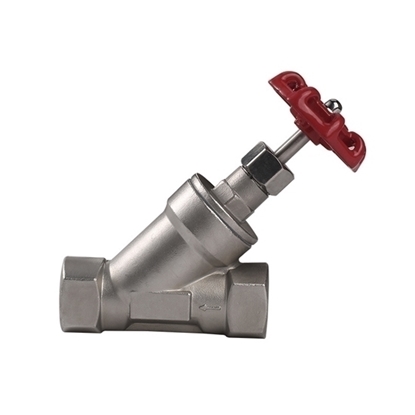Angle Seat Valves
1" Pneumatic Angle Seat Valve, 3 Way
1/2" Pneumatic Angle Seat Valve, 2 Way, 2 Position
1/2" Pneumatic Angle Seat Valve, 3 Way
3/4" Pneumatic Angle Seat Valve, 3 Way
3/4" Pneumatic Angle Seat Valve, 2 Way, 2 Position
1" Pneumatic Angle Seat Valve, 2 Way, 2 Position
1-1/4" Pneumatic Angle Seat Valve, 2 Way, 2 Position
1-1/2" Pneumatic Angle Seat Valve, 2 Way, 2 Position
2" Pneumatic Angle Seat Valve, 2 Way, 2 Position
2-1/2" Pneumatic Angle Seat Valve, 2 Way, 2 Position
3" Pneumatic Angle Seat Valve, 2 Way, 2 Position
4" Pneumatic Angle Seat Valve, 2 Way, 2 Position
1/2" Manual Angle Seat Valve
3/4" Manual Angle Seat Valve
1" Manual Angle Seat Valve
1-1/4" Manual Angle Seat Valve
1-1/2" Manual Angle Seat Valve
2" Manual Angle Seat Valve
2-1/2" Manual Angle Seat Valve
3" Manual Angle Seat Valve
Pneumatic angle seat valve is a slanted seat valve operated by a single acting pneumatic actuator with spring safety protection. The angle seat valve is made from stainless steel material, and the pneumatic actuator is made from stainless steel or plastic. This angle inclined seat valve is widely used for air, water, oil, gas, steam and other flow control.
ATO.com provides 1/2 inch, 3/4 inch, 1 inch, 1-1/2 inch, 1-1/4 inch, 2 inch, 2-1/2 inch, 3 inch and 4 inch thread port pneumatic angle seat valve for you to choose from, stainless steel and polyamide pneumatic actuator available. Buy for your applications now!
How does an Angle Seat Valve Work?
Angle seat valves are operated by air supply. Normally closed valves usually close the valve under no pressure and use a spring to return the valve to rest. Normally open valve openings remain open unless air pressure closes them. Double acting angle seat valves can be used to handle two-way flow. These valves have no spring and rely on air supply to locate the valve. These configurations affect the valve pressure rating. Up and down flow will reduce the water hammer effect, but will typically reduce the valve's maximum operating pressure by 50%. However, installing a strong return spring will help increase the working pressure, but larger actuators are required to overcome this increased spring strength. Full working pressure can be achieved through flow over the seat and the water hammer can be reduced by limiting the flow of compressed air supply.
How to Select an Angle Seat Valve?
Port Size
Angle seat valves are available in a variety of sizes and ends. The most commonly used valve sizes are 1/2 to 3 inch NPT threads. Some manufacturers offer flange mounting sizes. The nominal diameter (DN) of the seat helps to select the right size. Using the correct valve size helps achieve efficient flow and reduces the chance of wear and leakage.
Operating Temperature and Pressure
Typically, the maximum working pressure is in the range of 5 to 20 bar. Not only should the medium pressure be considered, but also the pressure of the compressed air circuit. Sealed with PTFE, they can withstand temperatures up to 200 °C. Other sealing materials include NBR (Nitrile rubber), FKM (fluororubber) and EPDM, which generally have lower temperature ratings. Temperature and pressure levels are also affected by the housing material. In addition, stainless steel has the best corrosion resistance and material strength. Therefore, ATO Angle seat valves have stainless steel housings with PTFE seals.
Why do you Choose ATO Pneumatic Angle Seat Valve?
- ATO pneumatic angle seat valve is with valve open or closed position display.
- External pneumatic pilot for increased service life and maintenance-free.
- There is a self-adjusting sealing gland between the overflow port and the slider, which can improve the sealing performance.
- The valve body is an angle seat structure that can achieve large flow, compact structure and fast response.
Filter by:
Clear All
